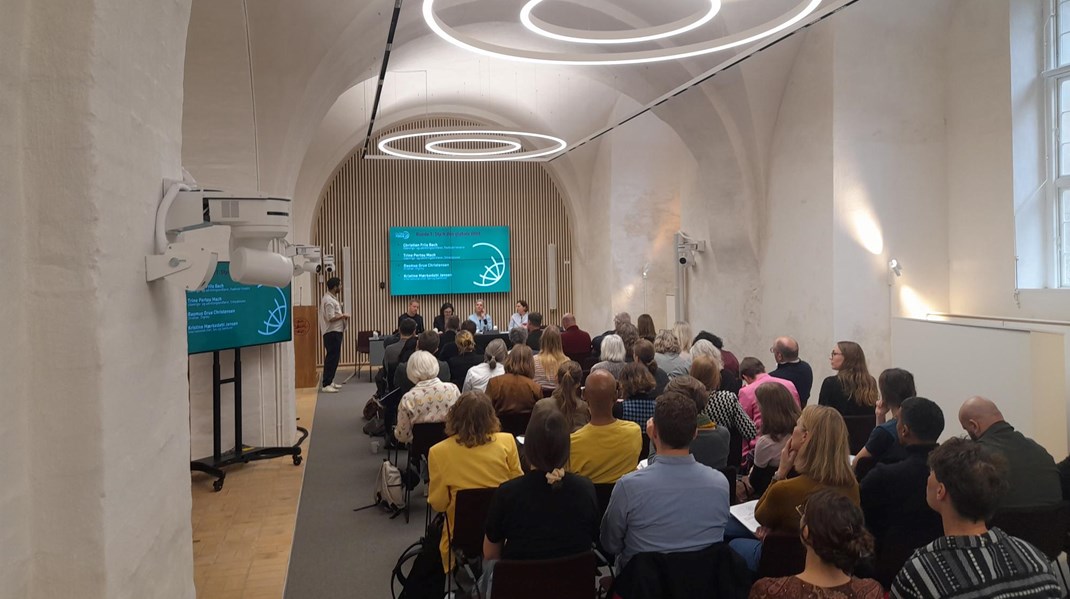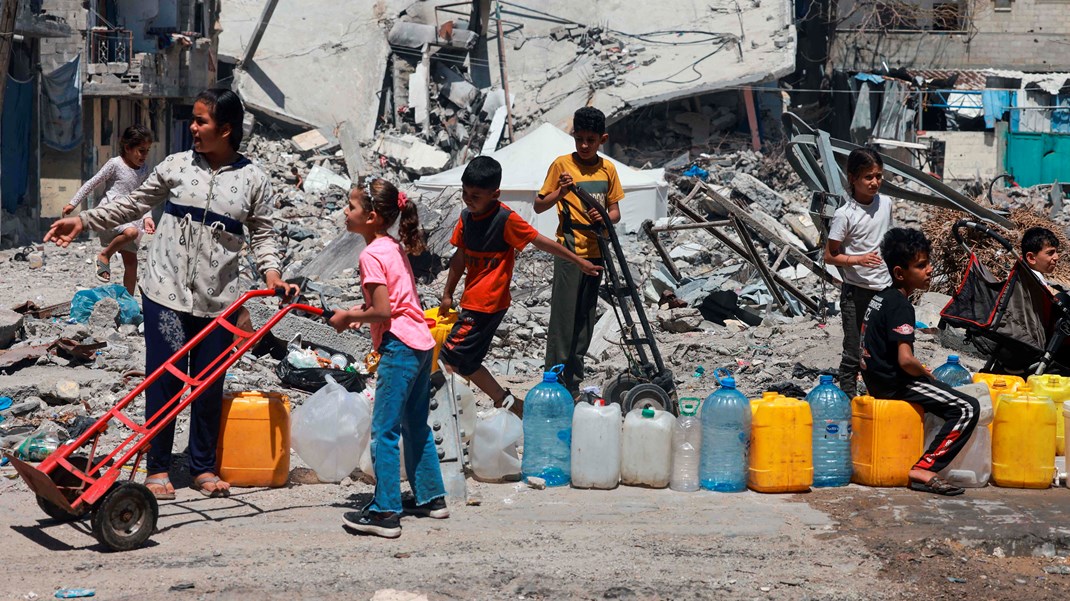Attacks on education in Pakistan taking heavy toll on youth
(London, March 27, 2017) – Attacks by the Taliban and other militant groups are having a devastating impact on education in Pakistan, Human Rights Watch said in a new report released a day before the Second International Conference on Safe Schools in Buenos Aires, Argentina.
Pakistan faces significant education challenges, with an estimated 25 million children out of school. The report includes testimonies on how militant violence has disrupted the education of hundreds of thousands of children, particularly girls. The report also documents instances of military use of educational institutions.
“The Taliban and other militants have repeatedly committed horrific attacks on Pakistani schools, depriving students of their lives as well as their educations,” said Bede Sheppard, child rights deputy director at Human Rights Watch. “These audacious attacks often occur because, too often, authorities have protected militants or failed to properly prosecute them, and this needs to change.”
The Pakistani government should take urgent steps to make schools safer, and fairly prosecute those responsible for attacks against schools, students, and teachers, Human Rights Watch said.
The 71-page report, “Dreams Turned into Nightmares: Attacks on Students, Teachers, and Schools in Pakistan,” is based on 48 interviews with teachers, students, parents, and school administrators in the Pakistani provinces of Punjab, Sindh, and Khyber Pakhtunkhwa (KP). It documents attacks by militants from January 2007 to October 2016 that have destroyed school buildings, targeted teachers and students, and terrorized parents into keeping their children out of school. These attacks have often been directed at female students and their teachers and schools, blocking girls’ access to education. The report also examines occupation of educational institutions by security forces, political groups, and criminal gangs.
Pakistan’s militant Islamist groups, including the Taliban, Lashkar-e-Jhangvi, and their affiliates, use attacks on schools and universities to foster intolerance and exclusion, to target symbols of the government, and particularly to drive girls out of school. A Taliban commander claiming the attack on Bacha Khan University in KP in January 2016 said, “We will continue to attack schools, colleges, and universities across Pakistan as these are the foundations that produce apostates.”
After the Taliban took over large parts of the Swat Valley in KP in 2007, they began a violent campaign against education for girls. Over 900 girls schools were forced to close and over 120,000 girls stopped attending school. About 8,000 female teachers were driven out of work. For many girls, the loss was permanent and they did not return to school even after the Pakistan army had displaced the Taliban.
The Pakistani government does not collect specific data on the number of attacks on schools and universities, or the number of deaths and injuries from such attacks. However, according to the Global Terrorism Database, there were 867 attacks on educational institutions in Pakistan from 2007 to 2015, resulting in 392 fatalities and 724 injuries. The Global Coalition to Protect Education from Attack recorded at least 838 attacks on schools in Pakistan between 2009 and 2012, leaving hundreds of schools damaged. In December 2015, the Ministry for States and Frontier Regions (SAFRON) reported that in 2015, 360 schools were destroyed in three of the seven regions of Federally Administered Tribal Areas (FATA).
The government’s failure to keep consistent and transparent national data on such attacks raises serious concerns about its ability to track repairs of damaged schools, identify trends that could inform protective measures, or investigate and prosecute the responsible individuals, Human Rights Watch said.
Threats to education in Pakistan were spotlighted by the attacks on future Nobel Peace Prize laureate Malala Yousafzai on October 9, 2012, and the Army Public School in Peshawar on December 16, 2014. After the Peshawar attack, which killed 135 children, Prime Minister Nawaz Sharif announced a 20-point National Action Plan to comprehensively deal with terrorism – but none of the 20 points pertained to students or education.
In some areas, government forces have used educational institutions, including both schools and college hostels, as temporary or permanent barracks or military bases. When educational facilities are used for military purposes, it places them at increased risk of attack. The government should issue clear and public orders to Pakistan security forces to curtail the military use of schools.
Pakistan should develop a comprehensive policy for protecting students – especially girls – and teachers, schools, and universities from attack and military use, and engage all concerned ministry staff at the central and local level in implementing this strategy, Human Rights Watch said.
Securing schools has been largely left to the provincial governments, and these efforts have been sporadic and vary across provinces, with little attention to the specific need to protect girls’ education. In most cases, responsibility for enhancing and maintaining security has been passed to school authorities. This has led to increased hardship and chaos. Criminal cases have sometimes been filed against teachers and principals for not taking security measures.
Despite hundreds of attacks on teachers, students, and educational institutions, the Pakistani government has not successfully prosecuted the perpetrators in most instances. This failure was highlighted in June 2015, when it was reported that eight out of the 10 individuals arrested and charged for the attack on Malala Yousafzai were acquitted, even after they all confessed to their role in court.
Pakistan’s national government should cooperate with provincial authorities to create an advance rapid response system whenever there are attacks on schools, so that these facilities are quickly repaired or rebuilt and destroyed educational material is replaced so that children can return to school as soon as possible. During reconstruction, students should be provided education through alternative means and, where appropriate, given psychosocial support.
Pakistan should endorse the Safe Schools Declaration, a non-binding political agreement opened for state support at an international conference in Oslo, Norway, in May 2015. Countries that endorse the Safe Schools Declaration pledge to restore access to education when schools are attacked, and undertake to make it less likely that students, teachers, and schools will be attacked in the first place. They agree to deter such attacks by promising to investigate and prosecute crimes involving schools, and to minimize the use of schools for military purposes so they do not become targets for attack.
“The Pakistani government should do all it can to deter future attacks on education, beginning with improving school security and providing the public reliable information on threats,” Sheppard said. “Attacks on education not only harm the students and families directly affected, but also have an incalculable long-term negative effect on Pakistani society.”
For selected quotes from the report, please see below.
“Dreams Turned into Nightmares: Attacks on Students, Teachers, and Schools in Pakistan” is available at: https://www.hrw.org/node/301266/
For more Human Rights Watch reporting on Pakistan, please visit: https://www.hrw.org/asia/pakistan
For more Human Rights Watch reporting on children’s rights, please visit: https://www.hrw.org/topic/childrens-rights
Selected Accounts
“I was in my room in the hostel with some other students when I heard the sound of heavy firing. We locked ourselves in the room. We could hear firing and footsteps. The militants knocked at our door, asking us to open. I hid under the bed in my room. They eventually broke the door and came in. They killed five of my friends in front of me. Then they left the room. After a few minutes the militants came in again to check if anyone was alive. They did not look under the bed. But they lobbed a grenade in the room and left. I was very seriously injured by the grenade splinters. I was in the hospital for 20 days. I suffer from nightmares and panic attacks.” –Asim (pseudonym), student of Bacha Khan University, Charsadda, KP, describing the Taliban attack on January 20, 2016, speaking to Human Rights Watch in June 2016.
“Nobody thought that the Lashkar-e-Jhangvi would attack a school. School is “supposed to be a place of safety of our children. For many days after the attack, my son couldn’t go to school. I also didn’t want him to. There is police security at the school now, but on most days that is just one police constable. We have tried to put together a team of local volunteers to guard the school. But what can we do when faced with a suicide attacker?” –Ali Hussain (pseudonym), a parent in Hangu, KP after the Lashkar-e-Jhangvi attempted a suicide bombing at a local school in January 2014, speaking to Human Rights Watch in February 2016.
“The Taliban are now targeting teachers and activists who opposed them in 2009-10. The authorities are aware of the threats but they are not providing any protection. We have been abandoned to take care of ourselves. –Qaiser Khan (pseudonym), school administrator in Swat, speaking to Human Rights Watch in July 2016.
In December 2008, the Taliban told all schools that no girls should go to school and anybody who defies this order will be attacked. In January 2009, the Taliban allowed girls to attend school up to class 4. Teachers and school administrations who attempted to keep schools, particularly girls schools, running in that period were identified, routinely threatened, and often attacked. –Raza Shah (pseudonym), teacher in Swat, speaking to Human Rights Watch in July 2016.
Before the Army Public School attack our school had no security guard. After the attack, the government has provided us with one guard. It is a big school with more than 400 students and two gates. One security guard is not sufficient. So when he goes for lunch or a prayer break one of the older students, aged 15-16, takes over the responsibility of guarding the gate. Three of our students have been given a basic tutorial on handling a firearm by the security guard and they can stand as his substitute when he is temporarily away. I understand that this is not desirable or safe. However, I don’t see any other option of ensuring a minimum level of security. –Shamim Ara (pseudonym), principal at a government boys’ middle school in Lahore, speaking to Human Rights Watch in November 2016.
The army interferes in the functioning of schools and often enter unannounced for the purposes of conducting a search or reviewing security measures. This is a cause of constant stress for the students. This is also additionally problematic in a conservative society such as Swat, particularly barging into girls schools with guns, sometimes harassing female teachers. They [the army] act like they have conquered Swat. Some parents are reluctant to send girls to schools since they fear that the military officers can come and harass their daughters. –Babar Khan (pseudonym), education activist in Swat, speaking to Human Rights Watch in July 2016.
In 2012, almost all schools in Lyari were damaged by the fighting between criminal gangs. The worst affected were schools in the areas that were at the boundaries of different gang territories. Almost 80 percent of schools were either damaged or directly occupied by the gangsters. –Local government official in Lyari, Karachi, a low-income residential settlement in that has witnessed violence by gangs that enjoy the protection and patronage of various political parties, speaking to Human Rights Watch in September 2016.


